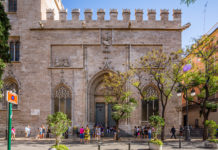The MasterClass Series #18
How to Shoot Auroras
Equipment
EOS 5D Mark III.
EF 24-70mm f/4 L IS USM.
EXIF #1, #2, #4, and #5
Focal length: 24mm
Aperture: f/7.1
Shutter speed: 25 seconds
ISO: 2000
EXIF #3
Focal length: 27mm
Aperture: f/4
Shutter speed: 8 seconds
ISO: 2000
Editing
Adobe Lightroom Classic CC
Last week, we discussed how to shoot fireworks. This week, it is about shooting nature’s fireworks – the auroras (Aurora Borealis/Aurora Australis or the Northern and Southern Lights).

The Story
They say practice makes perfect. Even when you shoot, the dictum holds. But then, shooting auroras is not your everyday street photography. For this, you plan for months, spend a lot, and visit places with extreme climate – be it Iceland, Alaska, Canada, or someplace else near the poles. So, you won’t get much practice before shooting them. And since it is not something most of us have ever seen before, preparation goes a long way in capturing satisfying photos of this phenomenon.

The challenge of shooting auroras
If you thought fireworks are unpredictable, auroras are even more so. Unless there is a high-intensity activity, an untrained eye will not catch them. Though they may turn out green in photographs, in reality, most low-intensity aurora activity is grey – almost like swathes of fog moving fast across the night skies. Add to that, two more challenges! Focusing at night time and getting the exposure time right. A longer exposure would lead to star trails, instead of pin-point sharp stars.

The shots
Let’s start with a few planning steps. Locate dark, clear skies (use one of the many apps available to do so, or join an aurora hunting tour). No dark skies mean no good aurora photos. Same way, clouds mean interrupted aurora in your photos.
Next, check the Kp-index to find out aurora activity intensity (0 = low intensity; 9 = high intensity). A Kp-index of 2-4 is well-suited for horizon level shots, whereas a higher index means the activity will be high in the sky.
Let’s now look at the equipment needed for capturing auroras. Besides a camera with manual settings, use a lens in manual focus mode. Carry spare batteries as sub-zero temperatures drain batteries fast. I use a battery grip that holds two batteries together. Since we are talking night photography, carry a tripod and a shutter release (remote). In case you don’t have a remote, switch to a 2-second timer setting on your camera.

And now, let’s take the actual shoot step-wise.
Simple steps to shoot auroras
- Mount the camera on a sturdy tripod.
- In manual mode, set the ISO to midrange of your camera (i.e. if your camera has only 7 stops of ISO, set it to the fourth stop*. Mine has 11-stops, so I could go up to 3200.)
- Use your widest lens as the aurora action spreads across the sky and you would want to capture the most of it.
- If there is no ambient light (city lights, your own tour bus lights, or even light from passing traffic), keep the aperture wide open – f/2.8 or f/4. If there is some ambient light, stick to midrange aperture (f/5.6 to f/8)
- Switch to manual focus, point the camera towards some star or the moon, enlarge it in live view to 10x and focus. This focus will not shift as you are in manual focus mode.
- Set the shutter speed to a maximum of 25 seconds and wait for the aurora action. Once it begins, press the trigger. Longer shutter speed will lead to inelegant star trails unless you are shooting a constant burst for an hour and are aiming to get star trails alongside auroras.

*7-stops of ISO: 100, 200, 400, 800, 1600, 3200, 6400. In such a case, pump up the ISO to 800 (4th stop), and not higher, as that will lead to noise.




















This blog post offers a concise yet comprehensive guide to capturing the mesmerizing beauty of auroras with your camera. The step-by-step instructions provided make it easy for both novice and experienced photographers to venture into astrophotography and create stunning images of the aurora borealis.
The emphasis on using a sturdy tripod and setting the camera to manual mode ensures stability and allows for precise control over exposure settings, resulting in sharp and well-exposed images. The tip to use the widest lens available is particularly helpful in capturing the expansive display of auroras across the night sky.
Furthermore, the advice on adjusting ISO, aperture, and shutter speed based on ambient light conditions demonstrates a nuanced understanding of photography techniques and ensures optimal results in varying environments.
The detailed explanation of manual focus techniques, including using live view and magnifying a star or the moon, highlights the importance of achieving precise focus for capturing clear and detailed images of the auroras.
Overall, this blog post serves as an invaluable resource for photographers seeking to capture the ethereal beauty of auroras, offering practical tips and expert advice to help them create stunning and memorable photographs.
Dear Anup! Its indeed a pleasure to read your keen observation. I commend your attention to detail. One small request though- could I use this as a testimonial on the website and on other social media handles of Travelure? Thanks for your inputs and look forward to a positive response. Cheers! Ajay
We are a group of volunteers and opening a new scheme in our community.
Your site provided us with valuable info to work on. You have done an impressive job and our entire community will be grateful to you.
Thank you!